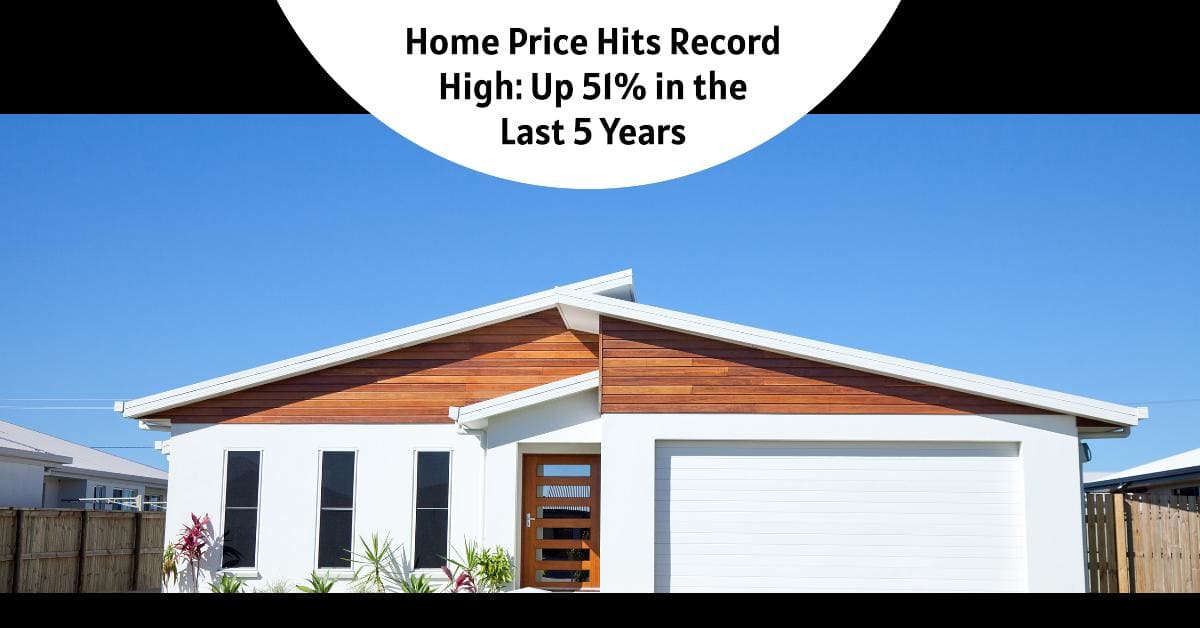The US housing market is presenting a puzzling scenario. On one hand, the national median sales price of existing homes has reached a record high of $419,300, reflecting a 5.8% increase from last year. This is on top of a staggering 51% jump in just five years. On the other hand, sales are experiencing a slump for the third month in a row. So, what's driving these seemingly contradictory trends?
US Home Price Hits Record High: Up 51% in the Last 5 Years
What's Driving the Trend?
Several factors are contributing to the record-breaking home prices in the US:
- Limited Inventory: Housing supply has been consistently lagging behind demand for years. This scarcity creates a competitive environment where buyers are willing to pay more to secure a property. Builders haven't been able to keep pace with demand due to factors like rising construction material costs and a shortage of skilled labor. Additionally, zoning regulations and lengthy permitting processes in some areas further restrict the development of new housing options.
- Low Interest Rates (for a while): Until recently, mortgage rates hovered at historic lows, making homeownership more affordable for many. This fueled buyer activity and further inflated prices. First-time homebuyers, a significant portion of the market, were particularly enticed by the low rates, which allowed them to stretch their budgets and compete for properties.
- Shifting Demographics: Millennial and Gen Z populations are entering prime home-buying years, creating a surge in demand. This generation, larger than the Baby Boomers, is reaching the stage in life where settling down and starting families becomes a priority. However, student loan debt and a competitive job market have delayed homeownership for some millennials. Still, their sheer numbers are a major driving force in the housing market.
- Remote Work: The rise of remote work has loosened geographic restrictions for some buyers, potentially increasing competition in desirable locations. With commutes no longer a daily necessity, professionals can now consider areas that were previously out of reach due to long commutes. This has intensified demand in suburban areas and resort towns, pushing prices up in those markets.
Rising Rates Cast a Shadow
However, the party might be nearing its end. The Federal Reserve's recent interest rate hikes have significantly impacted mortgage rates, which are now at a 23-year high. This increase in borrowing costs is making it more expensive to buy a home, leading to a slowdown in sales. While some buyers may still be able to afford monthly payments due to rising wages, the pool of qualified buyers has undoubtedly shrunk.
A Market at a Crossroads
The housing market finds itself at a crossroads. While prices remain high, buyer activity is dampened by rising borrowing costs. It's possible that prices may stabilize or even see a correction in some areas as affordability concerns come to the forefront. Additionally, the ongoing war in Ukraine and potential for a recession could further dampen buyer confidence.
What This Means for Buyers and Sellers
For potential buyers, navigating this market requires careful planning. It's crucial to get pre-approved for a mortgage to understand your budget and be prepared to act quickly in a competitive bidding situation. However, with rising interest rates, buyers may need to adjust their expectations about the price range they can qualify for. Working with a real estate agent who understands the local market dynamics is crucial in this environment.
Sellers, on the other hand, may still enjoy a good market for their properties. However, they should be realistic about pricing expectations in light of the rising interest rate environment. Consulting with a realtor to determine a competitive listing price that reflects the current market conditions is essential.
Beyond the Headlines
It's important to note that the national housing market is not a monolith. Price trends and market conditions can vary significantly depending on the specific location. Local factors like job growth, wage levels, and the availability of desirable amenities can all influence housing market dynamics. For instance, resort towns or areas with booming tech industries might see continued price appreciation due to their unique appeal, while affordability concerns may put downward pressure on prices in other regions.
For buyers and sellers considering a move, staying informed about trends in their target markets is crucial. Consulting with a local real estate professional who has a deep understanding of the area's specific dynamics is invaluable for making informed decisions in this ever-evolving market.
The Long View
The future trajectory of the US housing market remains uncertain. Much will depend on the Federal Reserve's monetary policy decisions and the overall health of the economy. A sustained period of high inflation could prompt further interest rate hikes, further dampening buyer demand. On the other hand, a significant economic slowdown could lead the Fed to adjust its course, potentially bringing down borrowing costs.
It's also important to consider long-term demographic trends. Millennials and Gen Z represent a massive cohort of potential homebuyers, and their demand is unlikely to disappear entirely. This suggests that a housing market crash, similar to the one witnessed in 2008, is improbable. A more likely scenario is a period of price stabilization or even a modest correction in some areas, followed by a gradual return to growth as the market adjusts to the new interest rate environment.
Ultimately, the US housing market remains a complex and dynamic system. Understanding the interplay of various factors – from demographics and interest rates to construction costs and government regulations – is crucial for navigating this market successfully.
ALSO READ:




